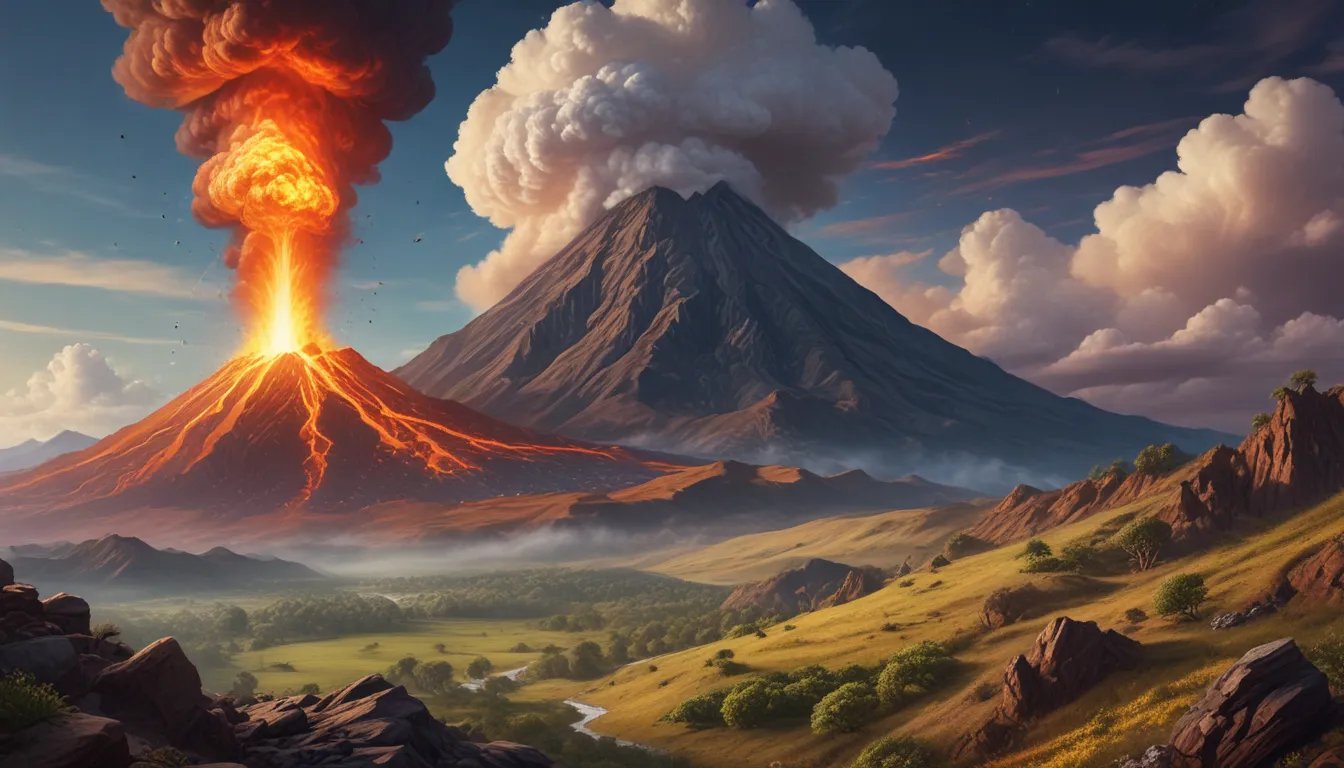A Note About Images: The images used in our articles are for illustration purposes only and may not exactly match the content. They are meant to engage readers, but the text should be relied upon for accurate information.
Volcanoes, with their raw power and explosive eruptions, have always captivated the human imagination. Among the various types of volcanoes that exist, passive volcanoes stand out for their unique characteristics and gentle nature. While active volcanoes are known for their explosive eruptions, passive volcanoes exhibit a calmer demeanor, making them a fascinating subject of study.
In this article, we will delve into the world of passive volcanoes and uncover 14 extraordinary facts that shed light on their intriguing nature. From their formation to their geological significance, passive volcanoes have a story to tell that is equally captivating as any other volcano. So, sit back, relax, and join us on a journey to explore these remarkable geological wonders!
Key Takeaways:
- Passive volcanoes, also known as non-explosive volcanoes, play a vital role in shaping the Earth’s landscape and can create stunning geological formations. Despite their calm nature, they can still pose risks to nearby communities. Their longevity allows scientists to study their behavior and contribute to our understanding of volcanic processes.
Unveiling the World of Passive Volcanoes
Passive volcanoes, contrary to their explosive counterparts, do not erupt with significant force. Instead, they exhibit a gentler eruption style characterized by slow lava flows and the release of gases. These volcanoes are often found at convergent plate boundaries, where subduction zones create the conditions for their formation.
Exploring the Geological Features of Passive Volcanoes
- Low Viscosity Lava: The lava of passive volcanoes has a low silica content, giving it a low viscosity. This characteristic allows the lava to flow more easily and cover larger areas.
- Cinder Cones: Cinder cones, a common type of passive volcano, are small, steep-sided volcanoes formed from explosive eruptions of lava fragments.
- Lava Tubes: Passive volcanoes can produce lava tubes, tunnels formed by flowing lava that solidifies on the outer surface while molten lava continues to flow within.
Unveiling the Marvels of Specific Passive Volcanoes
- Mauna Loa, Hawaii: Mauna Loa is the largest active passive volcano on Earth, known for its gentle slope and frequent eruptions.
- Hawaiian Islands: The Hawaiian Islands were formed by a chain of passive volcanoes as the Pacific tectonic plate moved over a hotspot, leading to the creation of the islands.
Understanding the Impact of Passive Volcanoes
- Crucial Role in Ecosystem: Passive volcanoes play a significant role in shaping the Earth’s landscape, creating new landmasses, volcanic islands, and enriching the soil with nutrients.
- Environmental Risks: Despite not having explosive eruptions, passive volcanoes can still pose risks to nearby communities through lava flows and volcanic gases.
Embracing the Longevity and Diversity of Passive Volcanoes
- Stunning Geological Formations: Passive volcanoes can create unique geological structures such as lava fields, shield volcanoes, and lava lakes that attract tourists and geologists.
- Global Presence: Passive volcanoes can be found in various parts of the world, each offering unique geological features and contributing to the diversity of volcanic landscapes.
Conclusion
In conclusion, passive volcanoes are a testament to the dynamic nature of our planet and the geological processes that shape it. From their peaceful eruptions to their environmental impact, these geological wonders continue to inspire wonder and awe. By delving into the world of passive volcanoes, we gain a deeper appreciation for the beauty and significance of these natural phenomena.
As we reflect on the 14 extraordinary facts about passive volcanoes, we are reminded of the intricate balance between nature’s forces and our human existence. Whether admiring their stunning landscapes or studying their behavior, passive volcanoes invite us to explore the wonders of our planet and embrace the marvels of Earth’s geological diversity.
FAQs
Q: What is a passive volcano?
A: A passive volcano is a type of volcano that is dormant and does not typically exhibit explosive eruptions, characterized by a gentle release of lava.
Q: Are passive volcanoes safe to visit?
A: Yes, passive volcanoes are generally safe to visit as they are dormant and not prone to explosive eruptions. However, visitors should follow safety guidelines for a safe experience.
Q: What are the main features of passive volcanoes?
A: Passive volcanoes are characterized by gentle slopes, wide craters, and low-viscosity lava flows that can spread over large areas.
Q: Do passive volcanoes have environmental benefits?
A: Yes, passive volcanoes enrich the soil with nutrients and support diverse ecosystems, offering environmental benefits.
Q: Can passive volcanoes become active again?
A: While passive volcanoes are dormant, there is a possibility for them to become active in the future due to geological activity and tectonic changes.
As we embrace the wonders of passive volcanoes, we invite you to discover more about Earth’s geological marvels and the fascinating stories they have to tell. Join us on a journey of exploration and discovery as we uncover the secrets of our planet’s diverse landscapes and the powerful forces that shape them.






